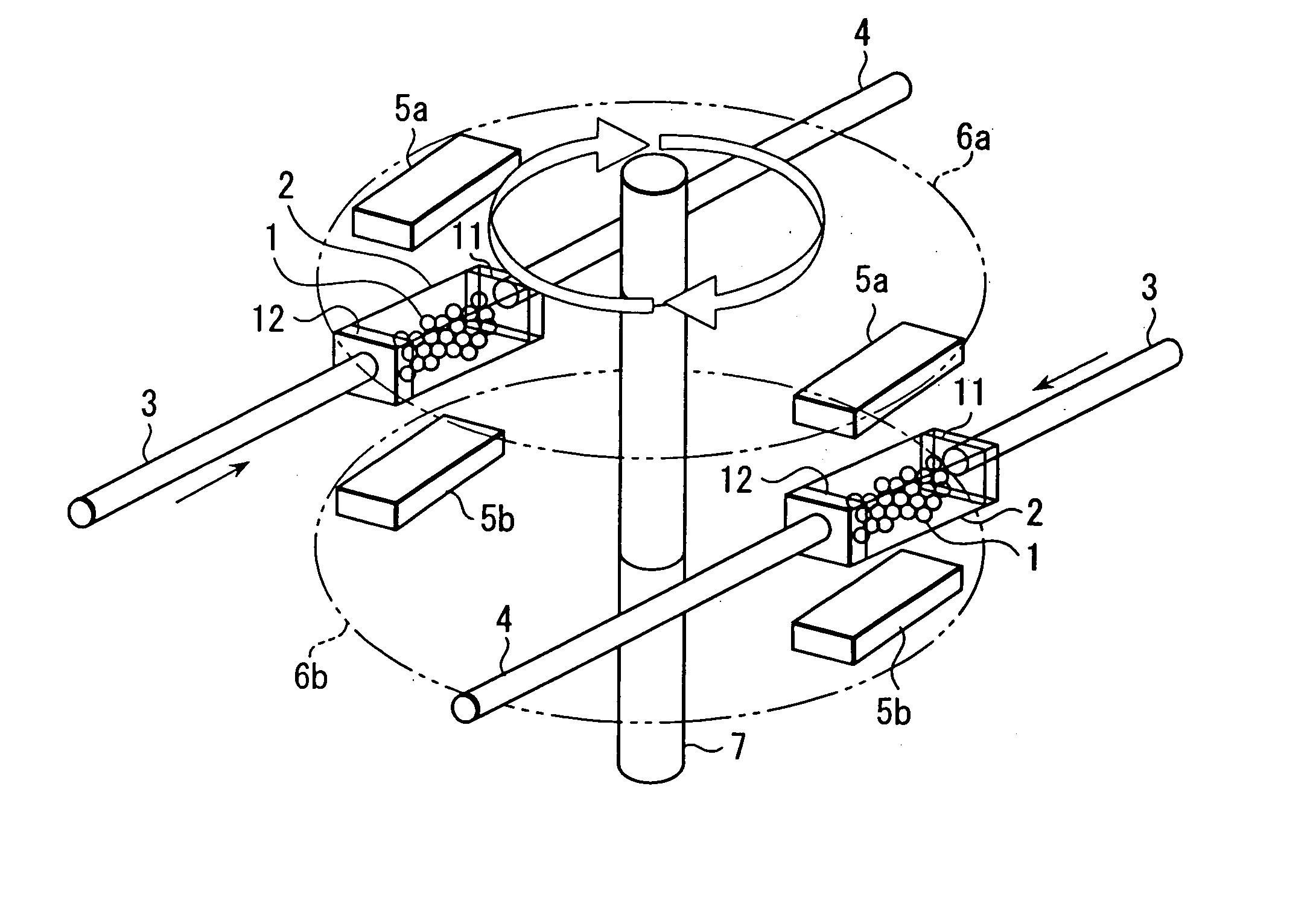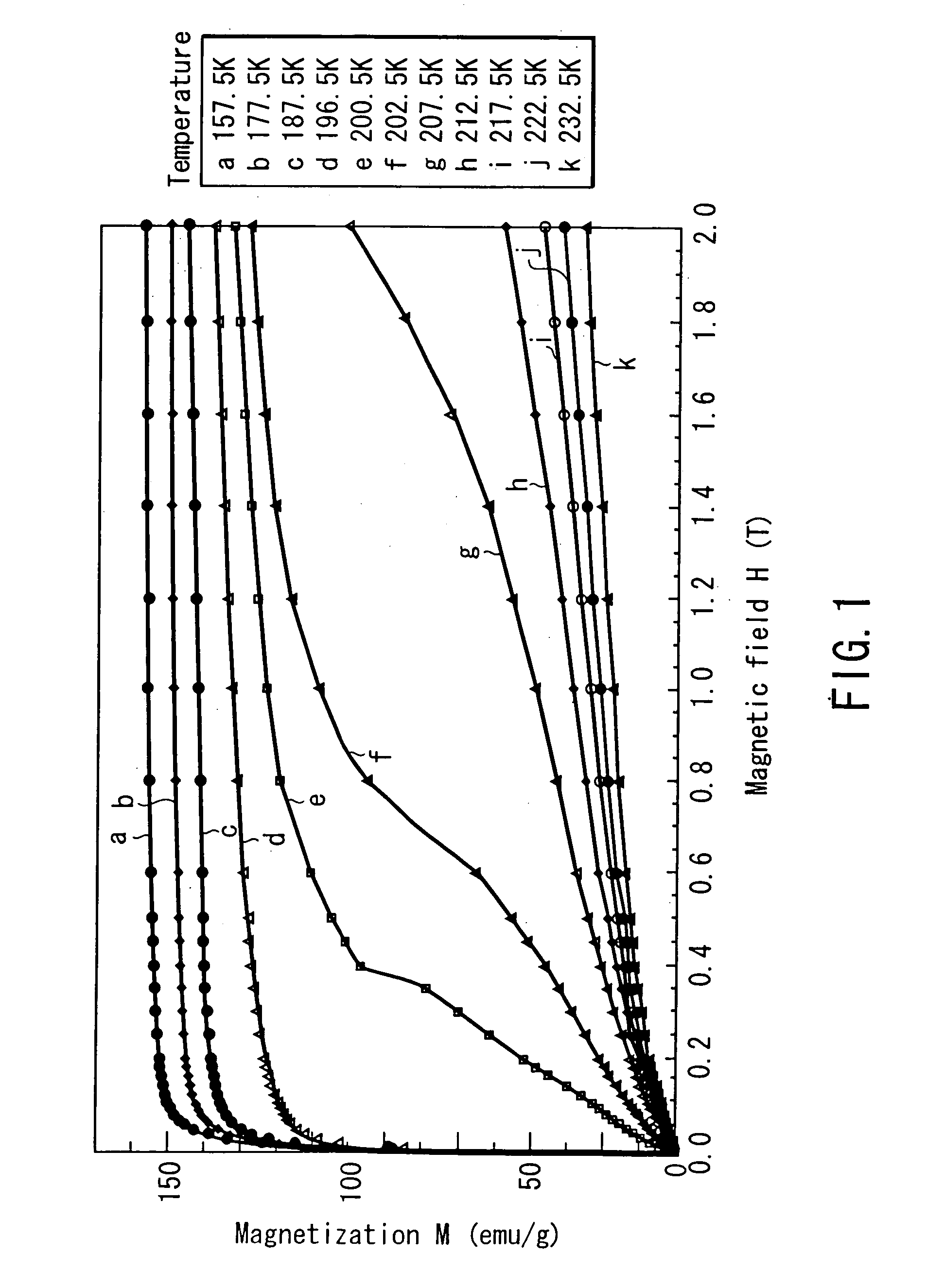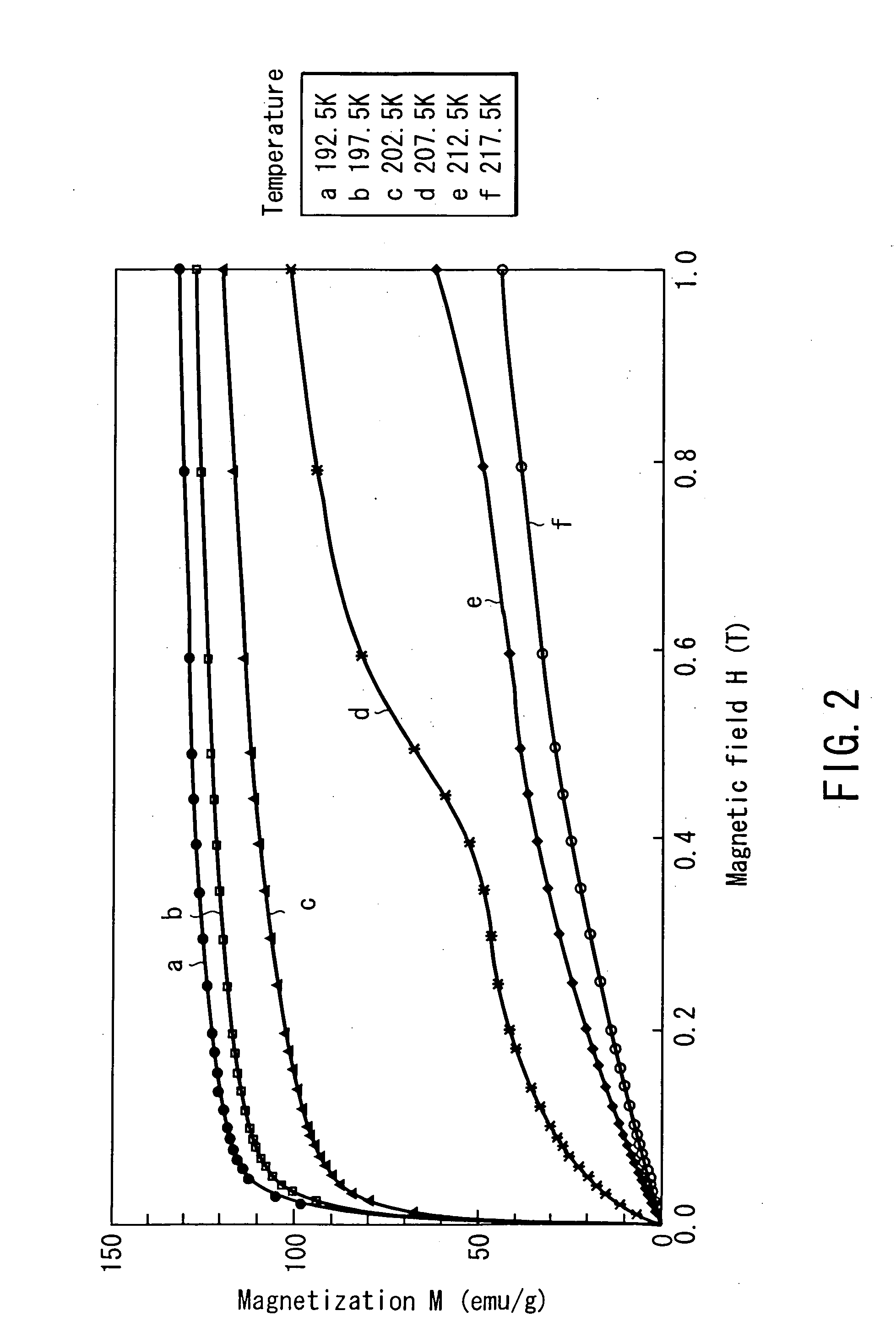Magnetic material
a magnetic material and entropy change technology, applied in the field of magnetic materials, can solve the problems of environmental pollution, heat transfer in the refrigeration cycle, and the use of substitute freon gases, so as to achieve the effect of changing the energy level balance, and increasing the peak width of an entropy chang
- Summary
- Abstract
- Description
- Claims
- Application Information
AI Technical Summary
Benefits of technology
Problems solved by technology
Method used
Image
Examples
example 1
[0070] Seven types of magnetic materials having the following compositions were manufactured, and these materials were tested for their magnetization curves and entropy changes due to the change in external magnetic field. In the following specimens, specimens 1 to 4 are magnetic materials based on the present invention, and specimens 5, 6, and 7 are comparative examples. [0071] Specimen 1: Fe81.7Si11.1La7.2 [0072] Specimen 2: Fe80.8Si12.1La7.1 [0073] Specimen 3: Fe82.6Co0.9Si9.3La7.2 [0074] Specimen 4: Fe81.7Si10.2Ga0.9La7.2 [0075] Specimen 5: Fe69.7Al23.2La7.1 [0076] Specimen 6: Fe75.8Si17.1La7.1 [0077] Specimen 7: Gd95Y5
[0078] After these materials having the above compositions were adjusted by arc melting, they were subjected to uniformization annealing in a vacuum at a temperature of 900° C. to 1,100° C. for two weeks. These specimens thus manufactured were tested for their magnetization curves.
[0079]FIG. 1 shows the magnetization curves of specimen 1 at temperatures of 157.5...
example 2
[0105] Three types of magnetic materials having the following compositions were manufactured, and these materials were tested for their magnetization curves and entropy changes due to magnetic field changes. In the following specimens, specimens 11 and 12 are magnetic materials based on the present invention, and specimen 13 is a comparative example. [0106] Specimen 11: Fe67Hf28Ta5 [0107] Specimen 12: Fe67Hf27Ta6 [0108] Specimen 13: Fe67Hf29Ta4
[0109] After these materials having the above compositions were adjusted by arc melting, they were subjected to uniformization annealing in a vacuum at a temperature of 950° C. to 1,000° C. for about 100 hr, thereby manufacturing base alloys. From these base alloys, granular specimens were manufactured by using a plasma spray process. As a consequence, a large number of sphere particles having a long diameter of about 0.1 mm to about 0.3 mm were obtained. These specimens thus manufactured were tested for their magnetization curves.
[0110]FIG....
example 3
[0119] Two types of magnetic materials having the following compositions were manufactured, and these materials were tested for their magnetization curves and entropy changes due to the change in external magnetic field. [0120] Specimen 21: Mn63.4Cr3.3Sb33.3 [0121] Specimen 22: Mn50As35Sb15
[0122] The raw materials in powdery form having the above compositions were mixed, sealed in a crucible, and kept at a temperature of 800° C. to 950° C., generating chemical reaction slowly for a long period (about 2 days for specimen 21, about 1 week for specimen 22). Specimen 21 and 22 were subjected to uniformization annealing in a vacuum at a temperature of 550° C. to 700° C. for about 100 hr. These specimens thus manufactured were tested for their magnetization curves.
[0123]FIG. 7 shows the magnetization curves of specimen 21 at temperatures of 300 K to 315 K. The magnetization curves of specimen 21 at temperature of 315 k indicated that, within the range of magnetic field of 1 tesla or les...
PUM
 Login to View More
Login to View More Abstract
Description
Claims
Application Information
 Login to View More
Login to View More - R&D
- Intellectual Property
- Life Sciences
- Materials
- Tech Scout
- Unparalleled Data Quality
- Higher Quality Content
- 60% Fewer Hallucinations
Browse by: Latest US Patents, China's latest patents, Technical Efficacy Thesaurus, Application Domain, Technology Topic, Popular Technical Reports.
© 2025 PatSnap. All rights reserved.Legal|Privacy policy|Modern Slavery Act Transparency Statement|Sitemap|About US| Contact US: help@patsnap.com



